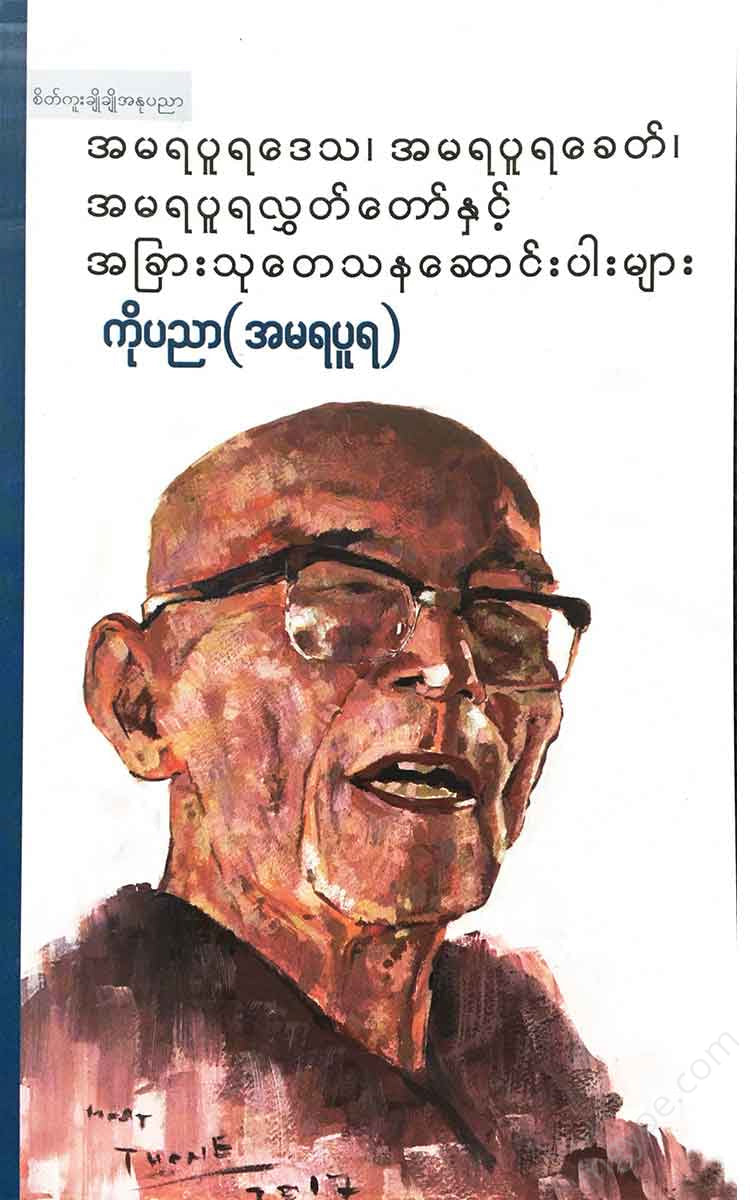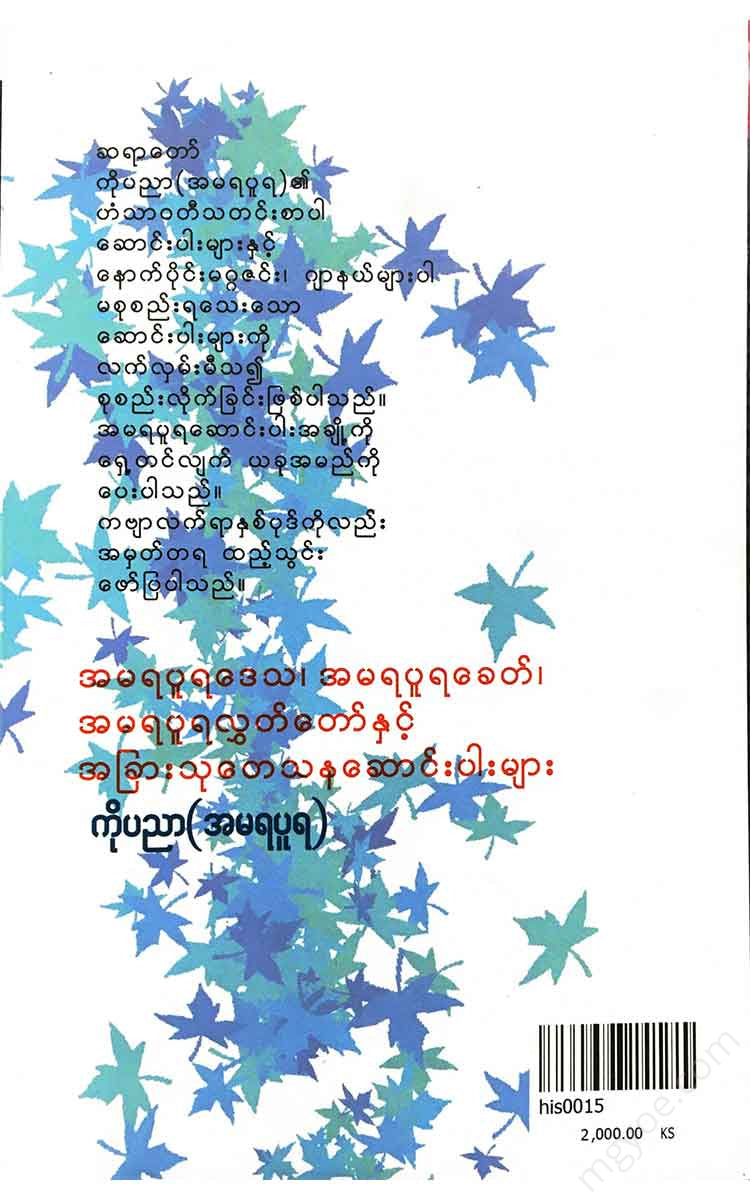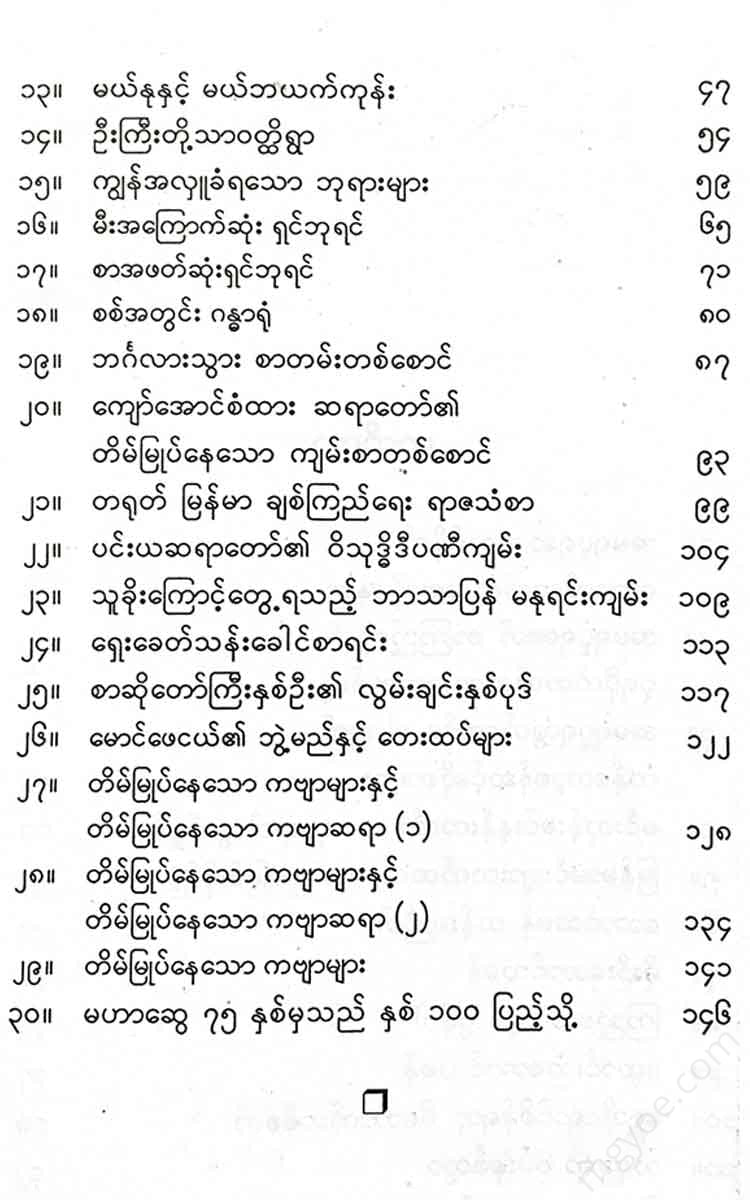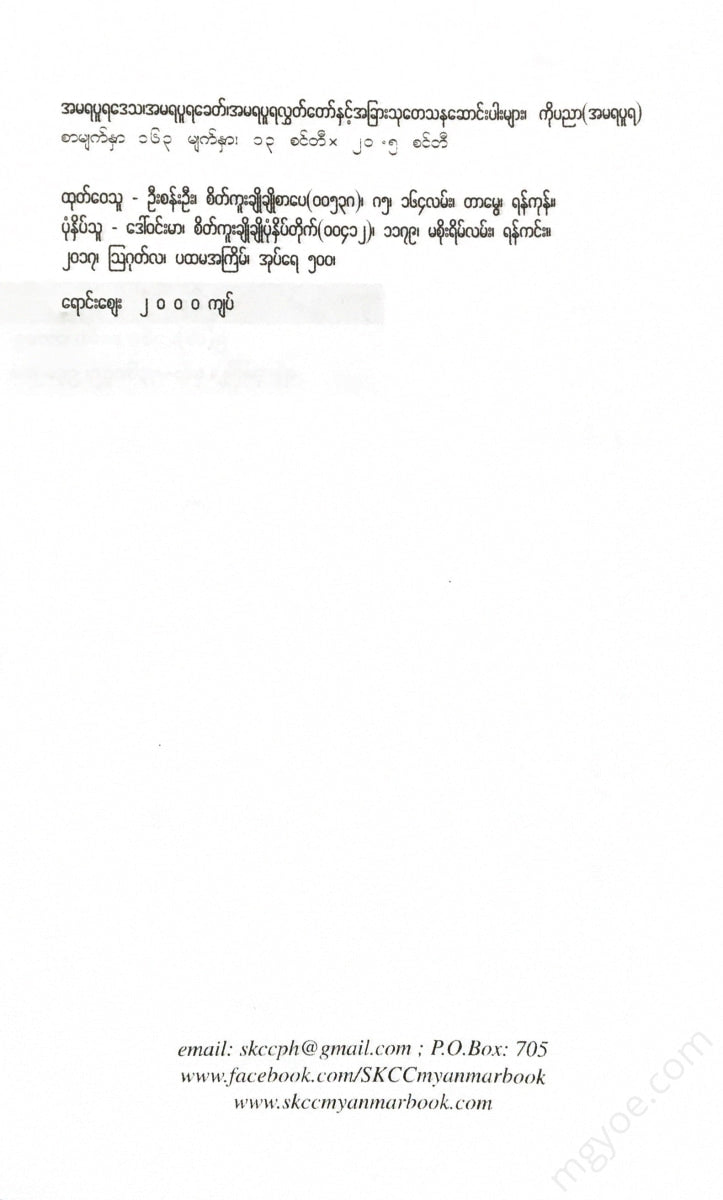စိတ်ကူးချိုချိုစာပေ
Ko Ying - Amarapura Region, Amarapura Period, Amarapura Palace and other research articles
Ko Ying - Amarapura Region, Amarapura Period, Amarapura Palace and other research articles
Couldn't load pickup availability
Stone Age human settlements around the Amarapura region
I visited the Archaeological Research Department in October 2017. I came here because I heard that the department had wall paintings from Kyauktawgyi Pagoda, wall paintings from Shwe Saran U Kala Pagoda, and wall paintings from Shwe Kuthar Pagoda on display. Along with these paintings, there were also items excavated from Han Lin. I saw Pyu period items such as human bones and pottery. I saw two items that I had seen before in a certain place among the Han Lin items. These two items were called “thunderbolts.”
It was a small stone. "Hey, little thunderbolt," came out of his mouth.
At that moment, a staff member came by. He explained that these stones were not thunderbolts, but stone weapons used by Stone Age people. The author said that these stones were found near Taungthaman Lake.
He recounted that stone tools are often found. He expressed his joy and requested that if he finds any such items, he should note the location and report them to the Department of Antiquities, and that they also donate stone tools.
The employee told me about it and I wanted to know more about stone weapons. So I started looking for books and documents about stone weapons.
I read a section about Burmese stone weapons in the Myanmar Encyclopedia. Found all over Myanmar
I became more interested in the Stone Age when I learned that stone tools and artifacts from the Stone Age could be seen in the Calcutta Museum and the British Museum in London. I also took special care to find places where stone tools were found.
After a few months, 3-4 stone weapons were found. The weapons found were listed in the book.
I was delighted to see that the stone weapons matched the photos. I was still not convinced, so I told U Maung Maung Tin from the Historical Commission. He carefully extracted and reconciled the evidence from various books and documents. Even so, he firmly decided that it was a “stone weapon” and informed the Archaeological Department.
The Department of Antiquities came to see the stone weapons and the sites where they were found, taking photographs to document the findings.
Sir U Maung Maung Tin and Dr. Than Tun have been researching the stone tool site since then. Their research has uncovered not only stone tools but also bone tools, horn tools, and Stone Age artifacts. (Some of the stone tools found at that time before excavation are shown in the following diagram.)
The site where the stone tools and artifacts were found before excavation was the “Mayaw Taung Kone Gyi” located to the west of Taung Thaman In, north of Maezel Pindan.
I have been interested in this hill since I was a child, so I have inquired about it. Two or three people, both past and present, told me that this place was once inhabited by the Kyats, and was called “Kyat Kone.” “The Kyats are creatures of nature. At night, they build towns and villages and live in a bustling atmosphere. They also say that in the morning, this place is covered with bushes and bushes.
Still not satisfied with this, he continued to inquire. Another said that this was the location of the giant "Nga Taung Kone". The four giants, Taung Thaman, Nga Taung Myint, Taung Kone, and Nga Taung Kjem, were located here.
They said that they used to meet and consult at the stone pillar, which is why it was called "the four mountains".
In the great chronicle of the Konbaungsak, it is said that when the Buddha was wandering around the region, four giants named Ngaung Thaman, Ngaung Keng, Ngaung Pyone, and Ngaung Myint offered alms to the God. It was prophesied that a great kingdom would be established in the place guarded by these four giants.
The word "Taung Pyone" in this history was "Taung Kone" and I noted it as something to think about. Then I searched for the manuscripts I had access to and found "Taung Kone" in one of the manuscripts of "Amarapura History". (That manuscript is in Dr. Thein Aung's possession.)
In the Amarapura Map (Purapaikmu), which is estimated to have been drawn more than a hundred years ago, it is seen that “high mountain, high mountain, high mountain, high mountain, high mountain” are close to each other. The high mountain to the east of the In is connected to the high mountain and high mountain. The high mountain to the west of the In is connected to the high mountain and high mountain. The high mountain in the story is very distant. In addition, the types of terrain are the same: high mountain, high mountain, high mountain, high mountain, high mountain. Therefore, I think that scholars should consider the location of the giant Nga Taung Pyone and the giant mountain.
The author would like to say that these places were inhabited by Stone Age people and were named after their leaders, such as Nga Taung Myint, Nga Taung Thaman, Taung Kone, and Nga Taung Kyem.
People want to know the exact origin of man. Then they have to dig up the earth, which knows the origin of man best, and ask. The earth, which is given to people, has been patiently telling them everything they want to know. Therefore, today's Myanmar, which is a part of the earth and is at one with the world, is telling them a part of everything that humans want to know.
They are already excavating and questioning the "big hill" in Amarapura.
It remains to be seen what answers the mountain will provide.
(Hansawaddy, 4-4-71.
A complete catalog of the Amarapura period library
It can be said that the emergence of libraries in Myanmar began in Thaton. This is because it is said that King Anawrahta of Bagan attacked and captured Thaton with the main focus on the Pitakas.
The claim that the Pitakas were transported on more than 30 elephants gives us an idea of the size of the Pitaka library. However, there is no solid evidence of a separate building that could be called a library.
King Anawrahta built a five-story brick building in Bagan, designated it as the Pitaka Library, and systematically preserved the Pitaka literature. Many scholars and monks of that time visited King Anawrahta's library. The Pitaka Library was opened with windows so that scholars could see and read. The library building is still visible today. Therefore, it is said that the library of Myanmar was founded in the Bagan period.
Later, Burmese literature developed and many literary scholars emerged, but successive Burmese kings did not establish libraries of the Pitaka in the capitals they founded.
It was only during the reign of Bodaw Buddha that the Sakya Pitaka was compiled. King Badon founded the city of Amarapura.
In the palace, “seven departments were built simultaneously” (Konbaungsat Maharajwin Gyi). Among these seven departments was the “Pitakathikattaw” library. It was located near the Sindhu Shwegu Pagoda (now Kap Kyaw Pagoda) in the northwest corner of the capital.
Michael Symes, who arrived in Amarapura in 1795, wrote in detail about the Amarapura library on pages 382 to 383 of his "An account of an Embassy to the Kingdom of Ava" osspå. According to that book, the library service in the Amarapura period was of a high standard and the literature was very diverse. . When their delegation arrived at the library, they were told that "the doors were not opened without a warrant, but only the letter boxes were looked at from the outside." This shows how strict the libraries were. Again, "the bundles in each box were kept in order. There could be from 50 to 100 bundles in a box. Various subjects were listed with their tables of contents. There were various books such as history books, musical instruments, medical books, art books, and novels. The bundles were divided into one book, one volume, and one volume. If we look at the writing of the embassy, which says, "The books are divided into sections, such as one volume, and the number is written on the box," we can see the nature of library cataloging at that time.
In this way, a catalog-like Amarapura period III (literature list) Purapika was found about 10 years ago in the hands of a ruined pagoda near Pakkyaw Pagoda. I would like to present this Purapika to study the library cataloging process.











